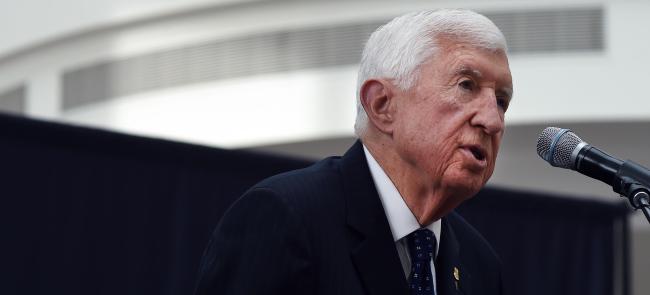
Many of the Air National Guard’s old C-130H Hercules cargo planes will soon be brought into the digital age.
The Air Force announced plans last week to modify 54 Air Guard and 23 Air Force Reserve C-130H aircraft with Avionics Modernization Program Increment 2 over the next five years.
Many of the aging aircraft have already received new propellers, engines, wing boxes and communications in recent years to extend their lifespan.
Most of these upgrades were funded by Congress at the request of NGAUS.
AMP Inc 2 is the final piece of the modernization effort, and, according to officials, it is being covered by the Air Force at approximately $7 million an aircraft.
Most of the aircraft being fully modernized were built from 1992 to 1995, the officials said.
The modification provides a new flight management system, autopilot, large glass multifunctional displays, digital engine instruments, digital backbone and a terrain awareness and warning system.
The 417th Flight Test Squadron at Eglin Air Force Base, Florida, is currently testing a C-130H with AMP Inc 2.
"This modification completely changes the interface for the crew to employ the C-130H," said Maj. Jacob Duede, an experimental test pilot.
"Aircrew essentially had to print the directions before flying and then type the information in using latitude and longitude or use ground-based navigation aids," Duede said. "This new mod is the newest GPS navigation with a by-name search function and autopilot, all built into the aircraft."
The 417th FLTS has been involved in the AMP upgrade since 2017 and began AMP Inc 2 developmental testing in August on one aircraft, with others to follow this month.
The built-in flight plan modification ability is particularly impactful for the pilots.
Prior to the AMP, to modify their flight plan, pilots coordinated with air traffic control, then looked up new coordinates in latitude and longitude with equipment brought onto the aircraft like a tablet or laptop.
Then, the pilots took these numbers and entered them into the aircraft to adjust the flight plan.
"Depending on the proficiency of the crew, this could take 30-45 seconds or two to three minutes," Duede said. "Either of which is a long time when in the air moving at four miles per minute."
Using the new built-in multifunctional displays, the pilot can complete the entire process with a hand controller in less than 30 seconds.
"The new process is as quick as the first step of the old process," said the major, a 10-year C-130 pilot. "You just identify the point on the moving map, grab it and execute the flight plan."
AMP Inc 2 modernizes C-130Hs in the Air Guard's fleet not currently in recapitalization plans.
The Air Force announced in September that it had tentatively selected units in Connecticut, Illinois, Minnesota and Montana to convert to the C-130J Super Hercules.
But it will take a few years for all the new aircraft to come off the Lockheed Martin assembly line.
The aircraft will be purchased with funds added to federal budget proposals at the request of NGAUS.
The plan will leave only five units still flying H-model aircraft in the coming years: the 166th Airlift Wing in Delaware, the 139th Airlift Wing in Missouri, the 152nd Airlift Wing in Nevada, the 109th Airlift Wing in New York and the 153rd Airlift Wing in Wyoming.
Modernization and recapitalization of the Air Guard’s C-130H fleet is a NGAUS legislative priority.
— By Donald Lambert












